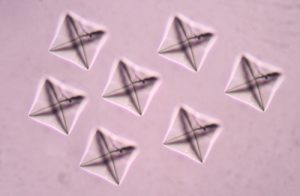THE OXALATE CONTENT OF FOOD
 The oxalate content of food can vary considerably between plants of the same species, due to differences in climate, soil quality, state of ripeness, or even which part of the plant is analyzed. Variations also may be caused by the different methods used for measuring oxalate in food. Published values for some foods can vary from negligible amounts to moderately high, so the foods have been grouped into broad ranges based on the higher values reported for each food. These food tables were compiled using the most up to date information available as of November 2007. In using these tables, it is very important to pay attention to the serving sizes listed.
The oxalate content of food can vary considerably between plants of the same species, due to differences in climate, soil quality, state of ripeness, or even which part of the plant is analyzed. Variations also may be caused by the different methods used for measuring oxalate in food. Published values for some foods can vary from negligible amounts to moderately high, so the foods have been grouped into broad ranges based on the higher values reported for each food. These food tables were compiled using the most up to date information available as of November 2007. In using these tables, it is very important to pay attention to the serving sizes listed.
A low oxalate diet is usually defined as less than 80mg oxalate per day. However, dietary oxalate restrictions will vary depending on the underlying condition causing high oxalate levels. The following suggested oxalate restrictions should be used only as a guide. Please check with your health provider to determine the appropriate level of oxalate restriction for you.
- Group 1 – Very high oxalate foods: all patients with calcium oxalate kidney stones, including those with Primary Hyperoxaluria are advised to avoid these foods.
- Group 2 – High oxalate foods: people with calcium oxalate kidney stones UandU high urine oxalate levels (hyperoxaluria), UexceptU those with Primary Hyperoxaluria are advised to avoid these foods. People with Primary Hyperoxaluria may not benefit from restricting these foods, as this will only limit their intake of other important nutrients without improving the hyperoxaluria.
- Group 3 – Moderate oxalate foods: Patients with Enteric Hyperoxaluria, should avoid these foods and all foods in Group 1 and 2. They should also follow a low fat diet with a high daily fluid intake. It may not be necessary for others with kidney stones and hyperoxaluria to restrict these foods, provided they consume adequate calcium at each meal (equivalent of 2/3 cup milk or 1 oz cheese or approximately 200mg calcium) & drink plenty of fluids.
- Group 4 – Low oxalate foods: These foods should be safe for most people with calcium oxalate stones regardless of the underlying cause, provided they eat adequate calcium at each meal & drink plenty of fluids.





